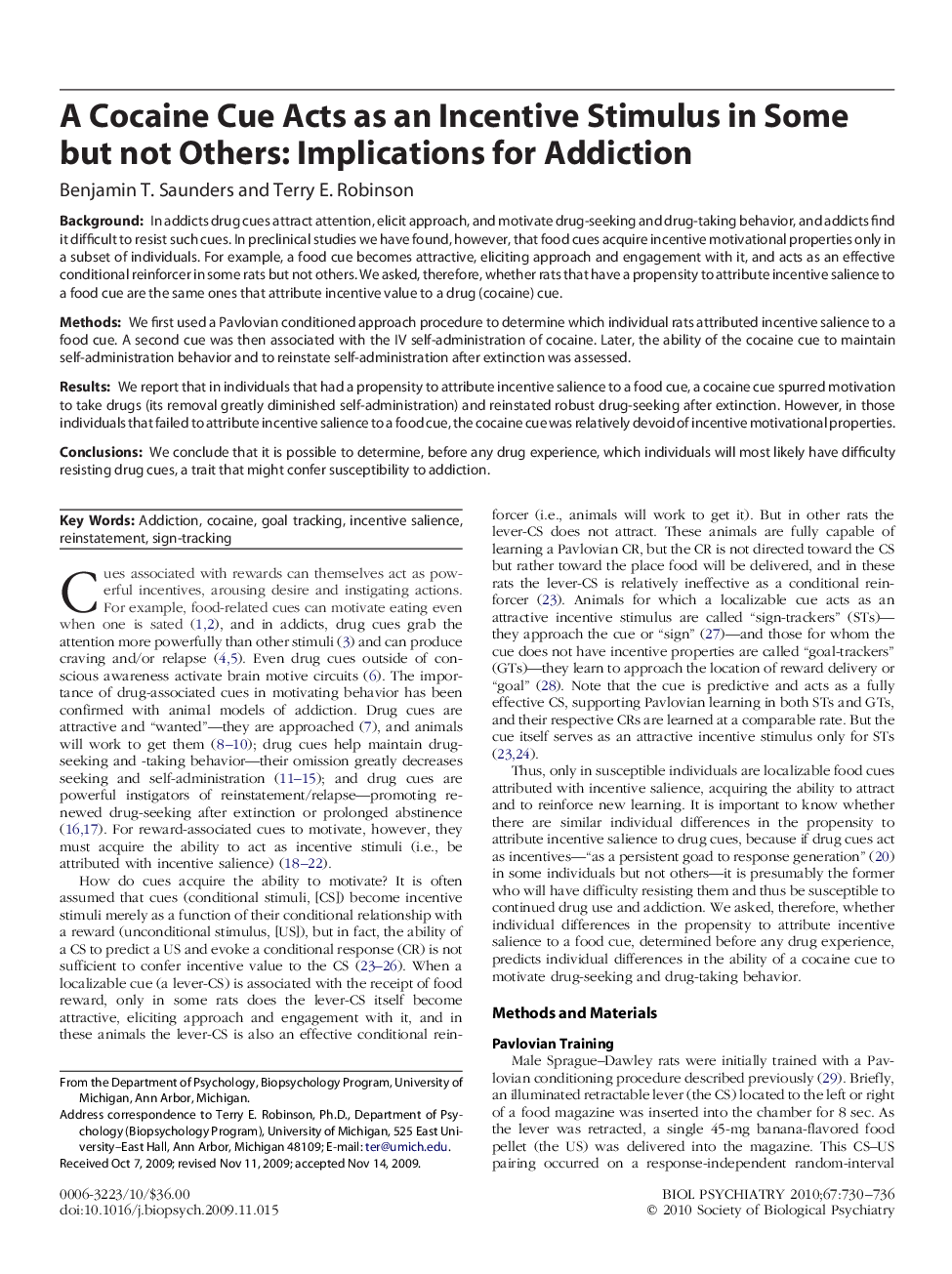| کد مقاله | کد نشریه | سال انتشار | مقاله انگلیسی | نسخه تمام متن |
|---|---|---|---|---|
| 4178672 | 1276508 | 2010 | 7 صفحه PDF | دانلود رایگان |

BackgroundIn addicts drug cues attract attention, elicit approach, and motivate drug-seeking and drug-taking behavior, and addicts find it difficult to resist such cues. In preclinical studies we have found, however, that food cues acquire incentive motivational properties only in a subset of individuals. For example, a food cue becomes attractive, eliciting approach and engagement with it, and acts as an effective conditional reinforcer in some rats but not others. We asked, therefore, whether rats that have a propensity to attribute incentive salience to a food cue are the same ones that attribute incentive value to a drug (cocaine) cue.MethodsWe first used a Pavlovian conditioned approach procedure to determine which individual rats attributed incentive salience to a food cue. A second cue was then associated with the IV self-administration of cocaine. Later, the ability of the cocaine cue to maintain self-administration behavior and to reinstate self-administration after extinction was assessed.ResultsWe report that in individuals that had a propensity to attribute incentive salience to a food cue, a cocaine cue spurred motivation to take drugs (its removal greatly diminished self-administration) and reinstated robust drug-seeking after extinction. However, in those individuals that failed to attribute incentive salience to a food cue, the cocaine cue was relatively devoid of incentive motivational properties.ConclusionsWe conclude that it is possible to determine, before any drug experience, which individuals will most likely have difficulty resisting drug cues, a trait that might confer susceptibility to addiction.
Journal: Biological Psychiatry - Volume 67, Issue 8, 15 April 2010, Pages 730–736